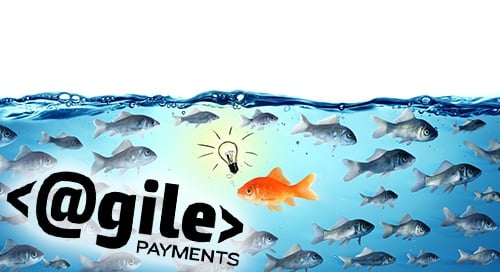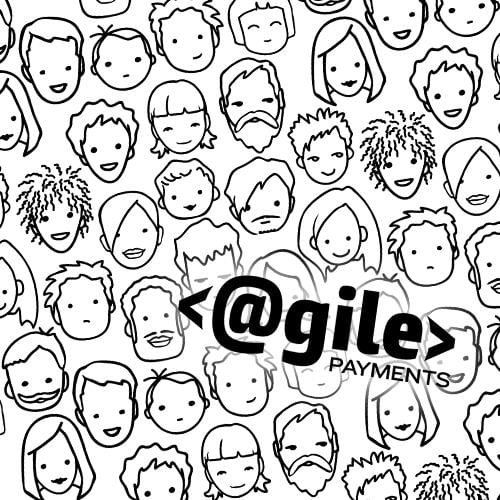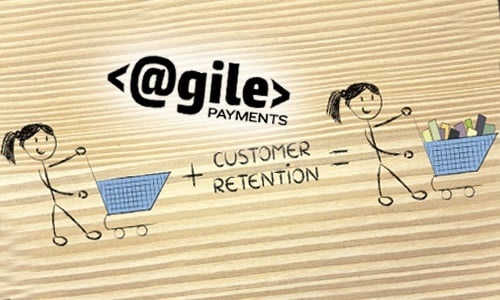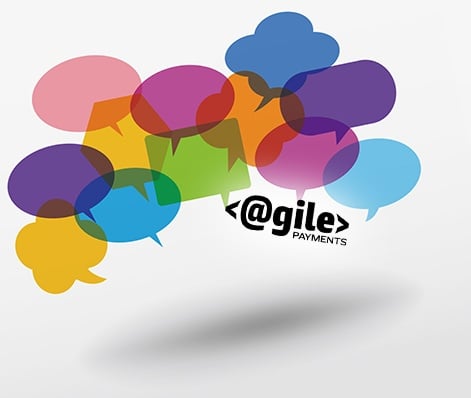Raise your hand if you think marketing an SaaS is the same as marketing any other type of business.
I’ll give you all a second to think on it.
What, no hands?
Good.
Of course successfully marketing an SaaS is different than marketing a traditional business. Anyone who has been in the industry for any length of time will confirm it with you too.
That doesn’t necessarily mean marketing an SaaS is harder though. Just that it’s different.
In this post I briefly touch base on what those differences are and how you can use them to your advantage.
Why bother?
Knowing the differences between SaaS and traditional marketing will help save you a lot of advertising revenue and stress as you build up your customer base.
That’s why.
Before I discuss the differences I’m going to share two ways ways SaaS marketing is similar to other marketing and get that out of the way.
Marketing is all about getting and retaining customers. This is, of course, still true with SaaS marketing as well. Another similarity between the two types is that great service sells itself.
That’s the end of the similarities.
So with that in mind here’s what you need to know about why your marketing needs to stand apart from traditional methods:
1. Selling A Service Is Not Product Selling
Your service should be ever-changing.
 Part of selling your service is selling what it will be in the future as well.
Part of selling your service is selling what it will be in the future as well.
As you well know, your SaaS service is constantly evolving and improving, but this means your marketing plan has to be constantly evolving as well.
You need to know how people use your services to market them in an effectual way:
- How do they find you?
- What do they search for?
- How to use the services once they have them?
- What else do they need – even if they don’t know it yet?
Because you are selling a service, it is also imperative to have the very best service providers. So your marketing plan needs to include proper acknowledgement of who provides the services and why those services are exceptional.
While the developers of your software are obviously extremely important, it is the help desk technicians, customer service people, marketing and sales teams and bloggers/content writers that make things happen. Whenever you can humanize those people as the backbones of your service, you are able to appeal to your customer base in an enhanced way.
2. Free Trials Are Absolutely a Necessary Strategy
When you’re marketing a new product you may give out a limited number of samples.
With SaaS marketing free trials are a standard part of SaaS marketing and are not optional.
 There are different iterations of the “free” model but that word is how you onboard customers.
There are different iterations of the “free” model but that word is how you onboard customers.
This is worth more but it also ensures a higher percentage of shift to paying customer and long-term customer (more on that in a minute). There are many options for how you offer free services.
The word “free” is what gets people in the door, but the actual strategy can be any of the following:
- Free trial for a set time
- Free trial that automatically turns into paid service
- Free trial with a credit card
- Free trial without needing to supply a credit card
- Free limited version or access
You can choose the strategy that best works with your service, and you may even have levels of options or paid memberships that vary in cost and services.
3. You Need To Quickly Turn Free Customers Into Paying Customers
In general, you have to make the sale quick.
 With SaaS marketing it’s important you convert your prospects to customers as fast as possible.
With SaaS marketing it’s important you convert your prospects to customers as fast as possible.
There isn’t much time wasted going in circles and coming back to you later when it comes to customers for SaaS. They know what they want. You either have it or don’t and are worth it or not.
You don’t have the opportunity to discuss options over drinks or offer major incentives. SaaS customers are looking for a specific set of services and if you offer them, and seem to do them well, you win. It’s important to be able to quickly and easily showcase what you have.
To do this requires significant emphasis on your website. Even though you absolutely must have a social media component to marketing as well, you cannot afford to have a website that doesn’t immediately draw customers in and hold them.
Some of the most important parts of a great website or download page are:
- Easy to read and attractive on mobile devices
- Easy to navigate
- Simple to find the items they need
- Robust search function that accounts for key words likely to be used
- Concise and understandable language in descriptions
- Reliable access to customer service
Once you have drawn customers in with your free offer, you need them to see the value of paying for continued services. This goes back to how your service must be constantly evolving to offer better services and more features.
You may think your service is amazing but as technology changes your services need to keep up with it. You need to know your competitors and stay at least one step ahead of them.
4. Those Same Customers Are Likely To Stay With You
Customers that can see you are innovative and constantly working to keep your services fresh and up-to-date will be willing to pay more for the best features and stay with you.
 As long as you keep offering the best services, you will find that paying customers don’t tend to stray too far.
As long as you keep offering the best services, you will find that paying customers don’t tend to stray too far.
Unlike with other products, people are often looking for more than just the best deal. SaaS customers don’t have time to constantly shift providers and research different options. They do their research at the front end to select the provider they think can offer them the best long-term service.
Once you have won them, you are likely to keep them if you keep up with their needs.
It’s important, however, to also take note of actual usage. They may stay with you but if they aren’t actively using the service and downloading updates and content and you don’t notice, you will lose them. Not only will you lose them eventually, but these are the people more likely to rate you low rather than just disappearing quietly.
You don’t just want quantity of customers, it’s really all about the quality of users. The customers that are satisfied, active users are also highly likely to rate you well and talk your services up to others.
5. You Still Need To Continuously Engage Long Term Customers
Unlike selling a one-time item, you have to continue earning your SaaS customer’s trust.
As discussed above, some of this is done by constant innovation. Some of it is also done by engagement with your customers. Commit to genuinely excellent customer service. But also commit to real customer engagement. This includes tracking how, when and how often customers are actively using your service.
 Quick turn-around response times on customer service communication is a key element. Most companies don’t think about how integral that is to their marketing strategy. Don’t be most companies.
Quick turn-around response times on customer service communication is a key element. Most companies don’t think about how integral that is to their marketing strategy. Don’t be most companies.
Some of the ways you can do this might be:
- Referral incentives for bringing in active new customers
- Special offers for customers who have used a certain amount of services or downloaded a certain amount of content
- A sales check-in to ensure they are finding what they need and ask what else they may want
- Offering a newsletter to keep them up-to-date on new services and content
6. Data Collection & Information Sharing Is A Key Strategy
This is often a forgotten aspect of marketing, but information can make or break your strategy.
Content is often produced as a soft-sales way to encourage purchases. If you are providing potential customers with useful information they can’t find easily elsewhere you are also building up trust. Blogs and social media are part of this strategy.
 The comment section is another place you can mine for data like keywords, customer interests and concerns, suggestions for improvement and services they are looking for. Social media platforms can encourage conversation as well.
The comment section is another place you can mine for data like keywords, customer interests and concerns, suggestions for improvement and services they are looking for. Social media platforms can encourage conversation as well.
You need to track site visits, clicks, search terms and more as this data can inform your services and targeted marketing. Tracking searches and keywords can help you more effectively provide suitable content on relevant topics. By monitoring the way users interact with your website you are able to formulate better content and understand what leads them to click, download and make purchases.
While some of these methods are similar to those used in other marketing, it is not only more vital to SaaS marketing but also more strategic.
The quality of your content is also paramount and should not be neglected. This strategy can fall under customer engagement because you should be adding valuable content regularly to keep people returning to your blog or site. You may choose to use comment sections as a way to produce meaningful discussion between your customers and your company.
7. Your Service Should Sell Itself
 The better your service is the easier it will be to build up your customer base. But the more you pay attention to the little things that make your customers happy the easier it will get for you to grow your base even larger.
The better your service is the easier it will be to build up your customer base. But the more you pay attention to the little things that make your customers happy the easier it will get for you to grow your base even larger.
This is the ultimate goal of your marketing: that the service should be so well integrated and so necessary your customers cannot imagine life or business without it.
At this point you are following the other suggestions:
- Constantly evolving your software and services
- Remaining innovative
- Demonstrating consistent customer engagement
- Accessible & customer-friendly website
- Collecting data
- Providing substantial information
- Offering excellent support
When you have these things firmly in place the service itself does the job of retaining customers and bringing in active new customers. The best marketing strategy ever is great service, unbeatable products and phenomenal customer support.
Naturally you will find these things provide loyal paying customers and encourage freebie customers to upgrade for all the goodies. Even better, word of mouth brings you all their friends.
What’s Your Next Move?
Whether you already have an SaaS marketing plan in place or are just beginning to create one, understanding the purpose of SaaS marketing and how it differs from other marketing you may have used to sell products in the past can help increase your performance.
In short, SaaS Marketing is unique because:
- It is selling a constantly changing service rather than a singular product.
- Customer service and providing an experience customers actively engage with is key.
- It relies heavily on the quality of the services to sell itself.
Now that you know the different parts that go into your SaaS marketing strategy, you can reconsider your current plans and if you need to focus in more on aspects you missed.
What other differences have you found in practice between SaaS marketing and other types? Let us know by posting them below in the comment section.



